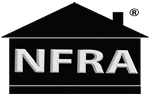Your home is likely one of the biggest investments you’ll make in your lifetime. However, this investment can wear down over time due to constant exposure to weather and natural events, potentially affecting its structure.
For example, homes in certain areas of the United States may suffer from ice and snow damage, while those in subtropical regions face extreme heat (over 90-100°F), heavy rain, flooding, and drought. As a homeowner, it’s crucial to consider how these factors might impact your property, especially its foundation, to safeguard your investment.
When it comes to foundation problems, it’s essential to act quickly to prevent severe damage that could compromise your home’s stability. Keep an eye out for the following signs of foundation issues to avoid expensive repairs.
1. Cracks in Foundation, Walls, or Floor
If you’ve noticed cracks in your floor, walls, or foundation, it’s likely a sign of foundation issues. These cracks indicate that your foundation is shifting, which can be caused by factors like the expansion and contraction of the surrounding soil and bad weather.
When inspecting cracks in your foundation and walls, it’s important to understand what they mean:
- Vertical cracks usually happen because the foundation is settling. These are generally less serious than other types of cracks.
- Horizontal cracks are more concerning because they can suggest that your foundation is under significant pressure.
- 45-degree cracks occur when there is major movement in the foundation. If these continue to worsen, your walls’ sheetrock may tear.
- Stair-step cracks in brick exteriors can point to construction issues with your property.
Cracks almost always signal foundational problems and should be inspected immediately.
2. Settling or Sinking Foundation
Foundation settling refers to the natural movement your property undergoes after being built. This usually happens because of gravity and soil shifting, and most property owners don’t even notice it.
According to industry standards, a differential settlement of 1 inch over 20 feet is considered normal and isn’t usually a cause for worry. However, if your property sinks more than this, you should get it inspected immediately to prevent serious foundation problems from developing.
If you suspect your house is sinking, look for gaps and cracks near the foundation. Vertical hairline cracks are a warning sign that you should have a professional assess your property right away. Delaying an inspection can lead to worse problems over time.
3. Foundation Upheaval
Foundation upheaval is when a property’s foundation moves or shifts upwards. This usually happens around the edges of a concrete slab foundation but can also affect the inside of your home.
The most common cause of foundation upheaval is too much moisture. When soil absorbs water from rain, melting snow, or plumbing leaks, it expands and pushes against the foundation, causing it to lift. This is especially true for homes built on clay soil, which absorbs moisture very well.
Other causes of foundation upheaval include growing tree roots, poor construction practices, natural disasters, and frost heave, which happens when the soil expands due to freezing water.
4. Doors that Stick or Don’t Open Properly
After a long period of heavy rain and flooding, you might find that your doors and windows aren’t opening or closing properly. This is usually because the wood has absorbed too much moisture and expanded. These fixtures should go back to normal once the wood dries out.
However, if your doors and windows continue to stick or don’t open and close correctly even when it hasn’t been raining, it could be a sign of foundation problems. When doors are affected, they often drag at the bottom or don’t fit right at the top, making them look uneven. Double doors, like French doors, might not align properly in the middle.
Sticking doors often indicate issues like foundation settling, upheaval, or structural shifts that cause the wood to swell or warp. This is a clear sign that your foundation might need a professional inspection.
5. Cracks Around Windows and Doors
Homeowners might also observe gaps around their exterior doors and window frames, which can prevent doors from latching properly. Door frames can become misaligned, affecting how doors operate. While these issues might seem minor and easy to fix, they often signal a more significant problem that needs attention to prevent further complications.
6. Uneven Floors
Sagging, bowing, or dipping floors are common indicators of foundation problems. These issues can arise due to foundation troubles and may vary based on the type of foundation your home has.
For example, concrete slab foundations can become uneven if the ground beneath them shifts. On the other hand, pier and beam foundations might sag or squeak. No matter the cause, uneven floors can be hazardous, especially for young children, the elderly, or those with physical impairments. If you notice your floors becoming unstable, get them professionally inspected right away to find and fix the underlying issue.
Schedule Your Free Estimate Today!
AAA Foundation Service
If you live in the Houston area and need house leveling, there is only one call to make. Trust the professionals of AAA Foundation Service to provide honest information about your home leveling issues. Call us today and we will get you setup with an in-depth inspection, free repair estimate, and a list of solutions.

Get Your Professional Foundation Repair Today!
Call: 713-467-8981



0% Financing for 18 Months
